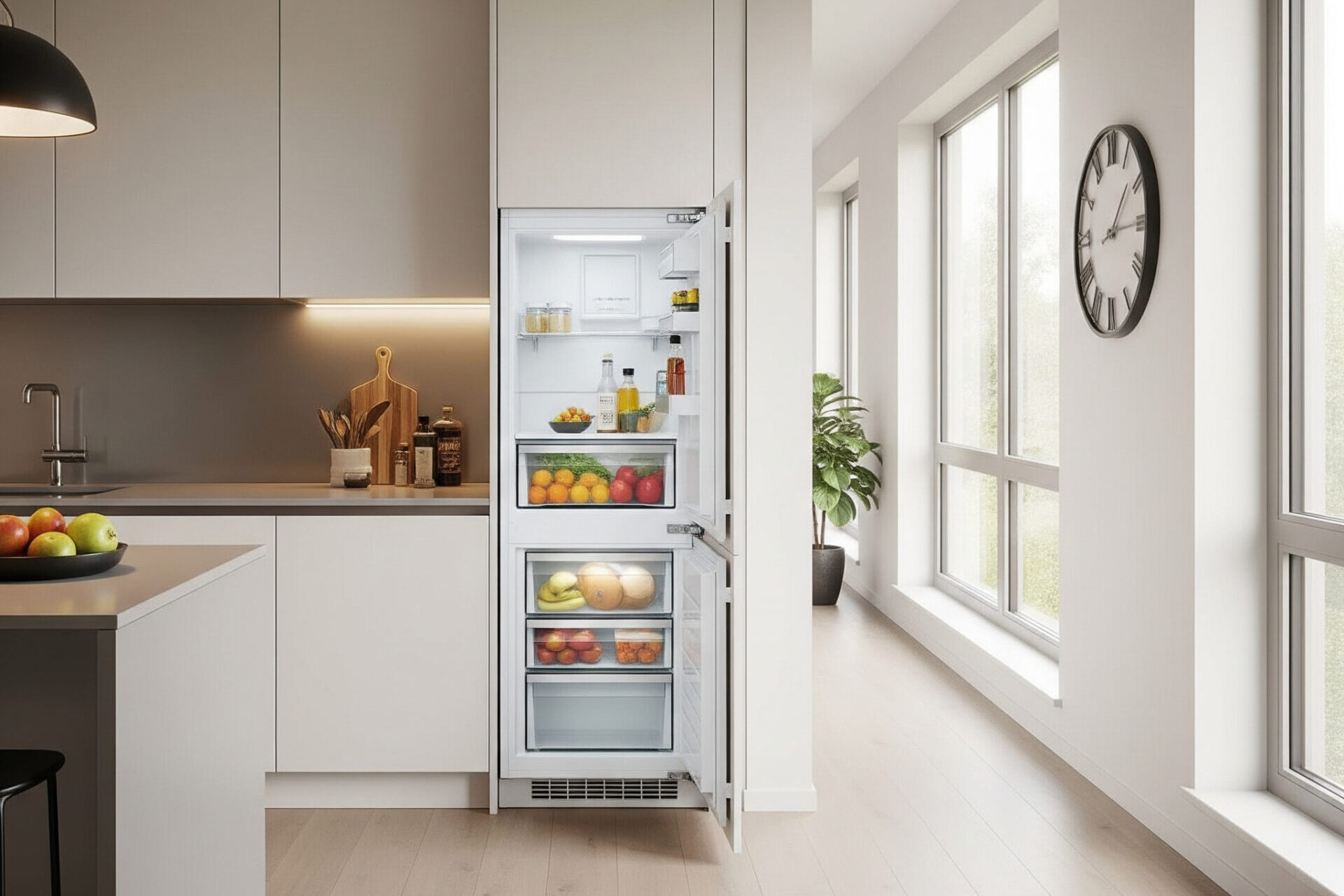
Question: Are Built-In Fridges Worth It?
Answer: Whether built-in fridges are worth it or not depends on several factors. They offer a seamless, upscale look and can increase home value, but come at a premium price with potentially higher repair costs. Consider your budget and aesthetic priorities.
Built-In Refrigerators: A Practical Examination
Are built-in fridges worth the investment? This question frequently arises for homeowners planning kitchen renovations or new builds. Built-in refrigerators offer a seamless, integrated look, enhancing kitchen aesthetics. They sit flush with cabinetry, creating a streamlined appearance. However, this premium aesthetic often comes with a higher price tag than freestanding models. This article explores the advantages and disadvantages of built-in refrigerators, helping you determine if they suit your needs and budget. We’ll examine factors like cost, size, features, and maintenance to provide a clear picture of what to expect. This balanced perspective will empower you to make an informed decision. We’ll help you evaluate if the benefits of built-in refrigeration outweigh the potential drawbacks.
Understanding the key differences between built-in and freestanding refrigerators is crucial. This knowledge allows you to compare features accurately. We’ll delve into these differences, providing specific examples to illustrate the points. This detailed comparison will help you determine which refrigerator type best aligns with your lifestyle and kitchen design.
Cost Considerations
Built-in refrigerators typically cost more than freestanding models. This price difference stems from several factors. Built-in models require precise dimensions and specialized installation. They also often include premium features. Counter-depth refrigerators, a popular built-in style, minimize protrusion from the cabinetry. This integrated look contributes to the higher cost.
Freestanding refrigerators offer a more budget-friendly option. Manufacturers produce these in standardized sizes, creating economies of scale. Their simpler installation also contributes to lower overall costs. This makes them an attractive choice for budget-conscious consumers.
Click here for more information about Blue Kitchen Refacing
Related Article: What Is the Life Expectancy of a Built-In Refrigerator?
Related Article: All About Built-In Fridges
Features and Functionality
Both built-in and freestanding refrigerators offer a variety of features. These features can include ice makers, water dispensers, and temperature-controlled zones. Some models even incorporate smart technology for remote control and monitoring. Consumers should prioritize features that align with their usage patterns.
Specific features influence the overall cost of both refrigerator types. For example, adding a water dispenser or ice maker will usually increase the price. Features like smart home integration contribute to the premium pricing of some high-end models.
Maintenance and Repairs
Maintaining built-in refrigerators can sometimes present challenges. Accessing internal components for repairs may require specialized technicians. This specialized service can increase repair costs. However, many built-in models offer robust warranties that cover certain repairs.
Freestanding refrigerators generally require less specialized maintenance. Their standardized design simplifies repairs. Replacement parts are usually readily available. This ease of maintenance can result in lower repair costs over the lifespan of the appliance.
Aesthetics and Design
Built-in refrigerators seamlessly integrate into kitchen cabinetry. This creates a cohesive and stylish appearance. The flush fit enhances the overall aesthetic of the kitchen. This integrated look is a key selling point for many homeowners.
Freestanding refrigerators offer a wider range of finishes and styles. This allows homeowners to match the refrigerator to their existing kitchen décor. While they don’t offer the same integrated look as built-in models, they can still complement various kitchen styles.
Energy Efficiency
Both built-in and freestanding refrigerators come in various energy efficiency ratings. Consumers can find models that meet their energy consumption goals. Look for Energy Star certifications for energy-efficient options. Consider long-term operating costs when making a purchase decision.
The insulation of a built-in refrigerator, enclosed by cabinetry, can potentially impact energy efficiency. This enclosure can either improve efficiency by reducing heat transfer or decrease efficiency if ventilation is inadequate, leading to the compressor working harder. Careful installation is key for optimal energy performance.
Conclusion
Are built-in fridges worth it? The answer depends on individual priorities. Consider your budget, desired features, and kitchen layout. If a seamless, integrated look is a top priority and budget allows, a built-in refrigerator offers a premium aesthetic. However, freestanding models offer a wider range of sizes and price points, making them a practical choice for many.
Carefully weigh the advantages and disadvantages presented. Prioritize features that align with your needs. By understanding the key differences, you can make an informed decision and choose the refrigerator that best suits your lifestyle and kitchen design. This careful consideration ensures you select a refrigerator that provides long-term value and satisfaction.

Blue Malue Get in touch with Blue here.
